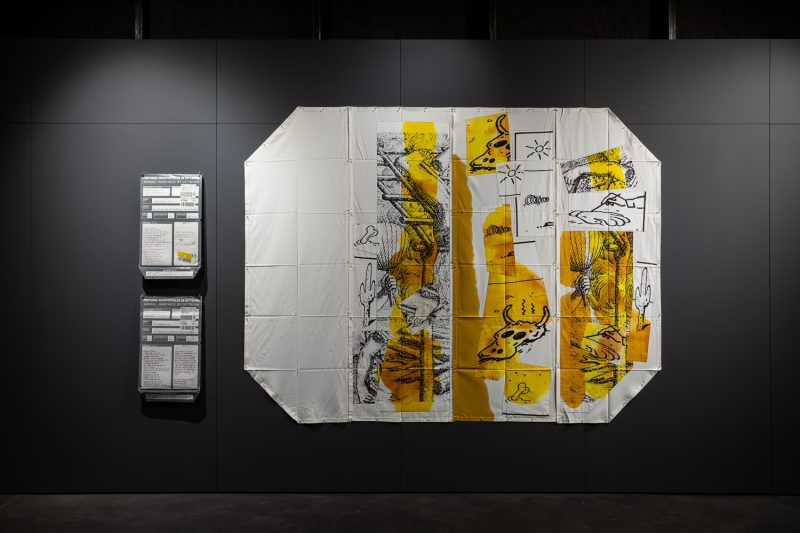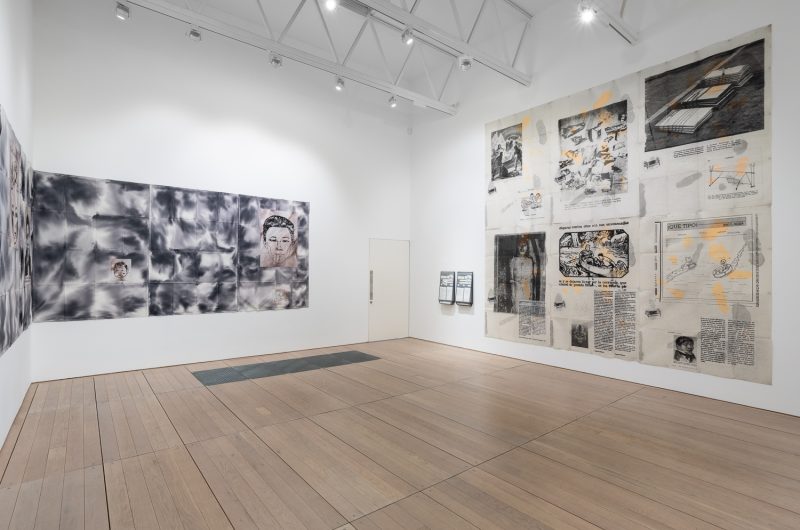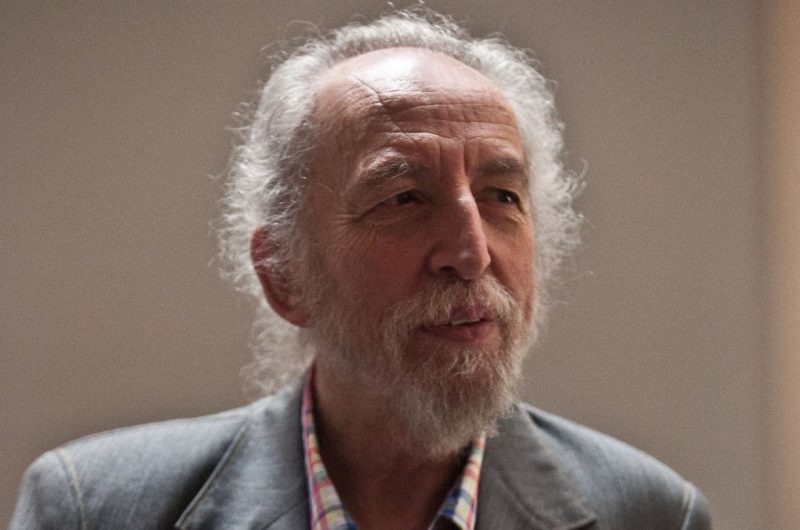EUGENIO DITTBORN
Airmail Paintings
Included were works from the series Historia del rostro (History of the Human Face) (ongoing), which bear faces drawn by the artists’ daughter in stark juxtaposition with mug shots and portraits of indigenous Chileans. Confronting the viewer with a direct gaze, these photographs are vivid moments in which the power of the state upon a subject is fixed and inscribed, and uncomfortable examples of the ethnographic gaze, through which indigenous populations were ‘possessed’ by their colonizers. Recent political upheavals in Chile have rendered the exhibition an example of the cyclical nature of geopolitical instability in the face of social injustice and inequality.
Read more…
BIOGRAPHY
Dittborn’s work has been exhibited internationally in numerous museum exhibitions such as Face à l’Histoire 1933-1996, Centre Georges Pompidou, Paris (1996); Around 1984: A Look at Art in the Eighties, P.S.1, New York (2000); 26th Bienal de São Paulo (2004); The 80s: A Topology, Museu Serralves, Porto (2006); América Latina, Foundation Cartier, Paris (2013); Unbound: Contemporary Art after Frida Kahlo, Museum of Contemporary Art (MCA), Chicago (2014); Were it as if, Witte de With Contemporary Art (2016); Memories of Underdevelopment, Museum of Contemporary Art San Diego, Fundación Jumex, Mexico City and Museo de Arte de Lima (2017–2018); Bestea Naiz, Koldo Mitxelena Kulturunea, San Sebastián (2018); and Direct Message, Museum of Contemporary Art (MCA), Chicago (2019–2020).
In 1997 his work was the subject of a survey exhibition at the New Museum of Contemporary Art in New York, which travelled to the Museo Nacional de Bellas Artes in Santiago (1998). In 2010, his recent work was exhibited in a one-person exhibition at Museo De Artes Visuales (MAVI), Santiago de Chile. In the fall of 2011, a survey of Eugenio Dittborn’s large scale, multi-panel ‘airmail paintings’ was held at the Bienal do Mercosul in Porto Alegre, Brazil.
In 2012, his work was selected for inclusion in Intense Proximity, La Triennale de Paris, and was a part of This Will Have Been: Art, Love, & Politics in the 1980s, which travelled from the Museum of Contemporary Art, Chicago, to the Walker Art Center, Minneapolis, and the Institute of Contemporary Art, Boston. Airmail Paintings 1989–2011, an exhibition of eight large works was shown at Alexander and Bonin in the fall of 2012.
In 2013, Museum Het Domein, Sittard presented a retrospective of his airmail paintings followed in 2014 by two solo shows, one Pinturas Aeropostales at KOW, Berlin, and a second exhibition of recent drawings at D21 Proyectos de Arte, Santiago. The following year, his work was included in the group exhibition Resistance Performed – Aesthetic Strategies under Repressive Regimes in Latin America at Migros Museum für Gegenswartskunst, Zürich. In 2015, the artist was the subject of a solo installation Las Dos at the Pontificia Universidad Católica, Santiago.
Read Less...











